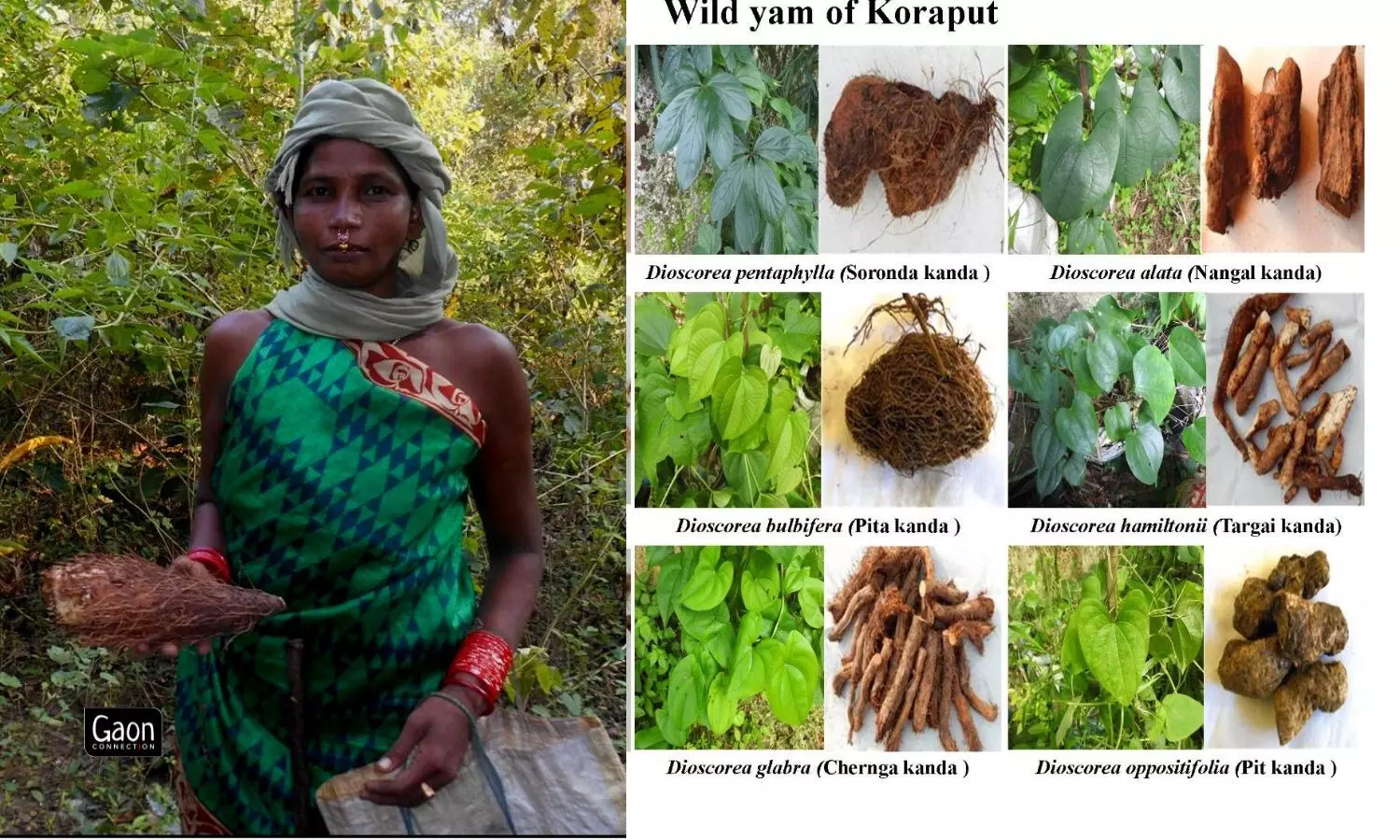Cuttack, Odisha
Wild yams or bana alu as they are locally known in Odisha, are under the microscope, and a team of researchers at the Central University of Odisha in Sunabeda town of Koraput district are discovering how these tubers are bursting with nutrients. The researchers are from the Department of Biodiversity and Conservation of Natural Resources of the University.
Debabrata Panda, who leads the research, said that they are working on the possibility of promoting wild yams commercially. “The nutritional content of the yams is retained even after they are processed and made into cookies and snacks,” Panda told Gaon Connection.
The research is part of a three-year project — Phyto-Chemical Profiling of Wild Yams — which began in 2022 and is trying to promote wild yam varieties of the eastern state.
According to Panda, 32 varieties of wild yams in the 45 villages of Koraput district were studied and assessed to determine which was best suited for commercial use.
“Our team focused on nine of the most widely-used wild yam varieties which include Pit, Targai, Kasha, Sika, Kulia, Soronda, Pita, Chernga, and Nangal,” the project lead said.
But the research around wild yams isn’t limited to laboratories alone. The researchers interacted with more than 100 villagers belonging to the Kondhs, Parojas, Bhumias, Bhatras and Duruas tribal communities.
They collected 122 wild plant varieties of fruits, leaves, flowers and roots that are consumed by these communities and ultimately zeroed in on the Kasha and Soronda varieties of wild yams for a more detailed analysis.
Also Read: Move over motichoor and boondi laddu, here comes the power packed mahua laddu
“The team prepared cookies and other snacks with the help of a startup named Jagannath Millet Hub in Jeypore in Koraput to find out how well the nutrients of the wild yams are retained once used in bakery products,” Panda added.

As per Panda, 32 varieties of wild yams in the 45 villages of Koraput district were studied and assessed to determine which was best suited for commercial use.
And the results were promising as these wild yams have high protein content, fibre content and vitamin C levels.
“So steps should be taken to conserve wild yams and it should be commercially promoted. If this is done, the wild yams can add to the identity of Koraput like its Arabica coffee and its aromatic Kala Jeera rice,” said Panda.
Traditionally, the tribal communities of Odisha collect the yams from forests, wash them, soak them for two to three days or boil to make them soft and drain out their alkaline content.

The indigenous communities collect them during Odia month of Pusha (January-February) for a festival.
“Eating them raw can cause nausea and vomiting because of their alkaline content,” Kartik Lenka, an agriculture scientist of MS Swaminathan Research Foundation (MSSRF) in Jeypore, Koraput, told Gaon Connection.
Padma Pujari from Baliguda village in Koraput explained how local villagers cook wild yams and regularly consume them. “We skin and turn them into paste and add some gurh (jaggery) before we eat it. We also fry and bake them. And of course, we slice them and sun dry them,” she said.
Wild yams are also roasted on the fire and relished, said Damodara Hantala from Kasiguda village in Koraput.
Also Read: Odisha: Kadaknath poultry farming is raising incomes of tribal families in Kandhamal
Wild yams are also a part of festivities. The indigenous communities collect them during Odia month of Pusha (January-February) for a festival. “We collect yams from forests, offer them to Dangara, our hill god, and our cattle before we eat it,” said Kondh tribal Budu Hantala, of Bilaputa village.
However, there is some concern about the depletion of wild yams in the forests. “Tribals dig yams out of the earth, leaving nothing for their regeneration. Therefore, MSSRF has preserved four varieties — Pit, Soronda, Chernga and Targai — as a gene pool for their future use,” said agricultural scientist Lenka.
The Foundation for Ecological Security, a non-governmental organisation in Koraput, has begun planting wild yams in 70 villages in Semiliguda and Pottangi blocks.
“We plant kandas in the shade of trees during the rains so that they can grow well. Tribals collect kandas in the winter months. We advise them not to dig out all and leave some for regeneration,” Pradip Mishra, the FES programme manager, told Gaon Connection.
Meanwhile, demands to popularise products made out of wild yams have been growing. Like millets, entrepreneurs are asking the government to provide support so that these nutritious items can be processed and sold widely.
The yams needed the same kind of patronage from the government as millets have received, said Jagannath Chinar, director of Jagannath Millet Hub in Jeypore.
“Our millet cookies and snacks fetch us a monthly turnover of about Rs 200,000. Yam can bring about similar turnover, if the government launched a sustained campaign to promote yam bakery products,” he told Gaon Connection.


















